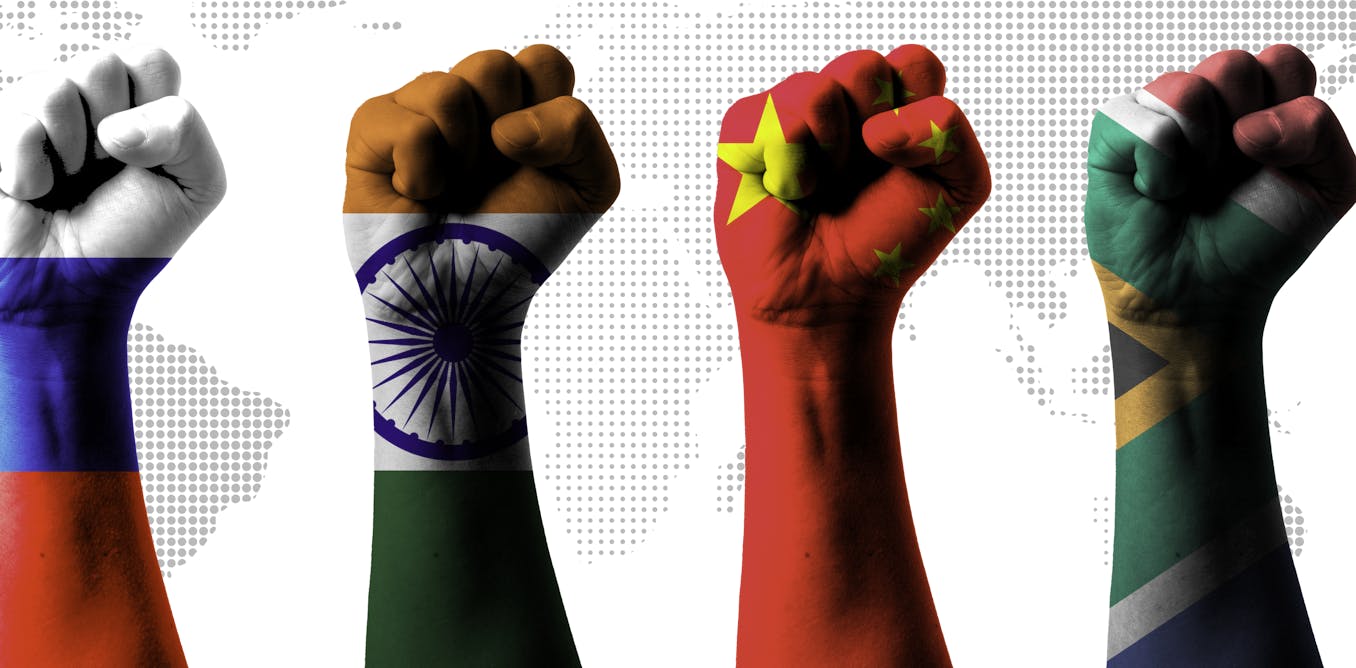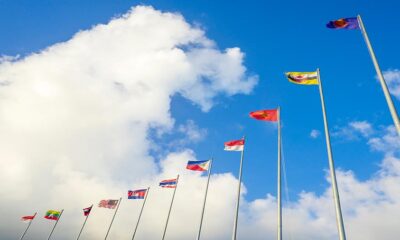China
China Watch: The Sina Weibo Story, a Warning to Police
A list of what The Wall Street Journal’s reporters in China are reading and watching online. (NOTE: WSJ has not verified items in the ‘News’ section and does not vouch for their accuracy.) News Items: China’s Ministry of Public Security issues a warning to police not to get involved in activities outside the scope of their duties , including housing demolitions and operating entertainment venues. (Xinhua) Vietnam claims sovereignty violations in lodging an official complaint against Chinese naval exercises in the South China Sea. (AFP) A record number of foreigners came to study in China in 2010, according to new government statistics. (China Daily) Digging Deeper: Following news that several Chinese state-run companies were suspending operations in Libya, Global Times tries to calculate Beijing’s losses in the North African country. Manacle Man: In the wake of calls for a “Jasmine Revolution,” the Financial Times examines the ascendancy of China’s security chief, Zhou Yongkang. “Two Meetings” Watch ( background ): The assets of government officials will be disclosed “ step by step ,” according to a CPPCCC spokesman. First task, he says: defining what “assets” means. China should raise its poverty line to match global standards, a political adviser says, arguing that the current level leaves 100 million poor people uncounted in official statistics. Social Media Watch: The Story of Sina Weibo: Forbes writer Gady Epstein takes a long, detailed and highly informative look at China’s most active microblogging platform. How many social network users are there in China? Penn Olson flags a new report that predicts 488 million by 2015 . Just Because: Shocker: Shanghai Daily reports that an online “Festival for Mistresses”—in which mistresses joined cheating husbands and wronged wives in a chat room— ended badly . How does a rich Chinese businessman memorialize his mother? With a $500,000 funeral . –compiled by Josh Chin. Follow him on Twitter @joshchin
A list of what The Wall Street Journal’s reporters in China are reading and watching online. (NOTE: WSJ has not verified items in the ‘News’ section and does not vouch for their accuracy.)
News Items:
- China’s Ministry of Public Security issues a warning to police not to get involved in activities outside the scope of their duties, including housing demolitions and operating entertainment venues. (Xinhua)
- Vietnam claims sovereignty violations in lodging an official complaint against Chinese naval exercises in the South China Sea. (AFP)
- A record number of foreigners came to study in China in 2010, according to new government statistics. (China Daily)
Digging Deeper:
- Following news that several Chinese state-run companies were suspending operations in Libya, Global Times tries to calculate Beijing’s losses in the North African country.
- Manacle Man: In the wake of calls for a “Jasmine Revolution,” the Financial Times examines the ascendancy of China’s security chief, Zhou Yongkang.
“Two Meetings” Watch (background):
- The assets of government officials will be disclosed “step by step,” according to a CPPCCC spokesman. First task, he says: defining what “assets” means.
- China should raise its poverty line to match global standards, a political adviser says, arguing that the current level leaves 100 million poor people uncounted in official statistics.
Social Media Watch:
- The Story of Sina Weibo: Forbes writer Gady Epstein takes a long, detailed and highly informative look at China’s most active microblogging platform.
- How many social network users are there in China? Penn Olson flags a new report that predicts 488 million by 2015.
Just Because:
- Shocker: Shanghai Daily reports that an online “Festival for Mistresses”—in which mistresses joined cheating husbands and wronged wives in a chat room—ended badly.
- How does a rich Chinese businessman memorialize his mother? With a $500,000 funeral.
–compiled by Josh Chin. Follow him on Twitter @joshchin
After keeping its currency tightly linked to the US dollar for years, China in July 2005 revalued its currency by 2 % against the US dollar and moved to an exchange rate system that references a basket of currencies.
China continues to lose arable land because of erosion and economic development.
The government has also focused on foreign trade as a major vehicle for economic growth.
Available energy is insufficient to run at fully installed industrial capacity, and the transport system is inadequate to move sufficient quantities of such critical items as coal.
Its mineral resources are probably among the richest in the world but are only partially developed.
A report by UBS in 2009 concluded that China has experienced total factor productivity growth of 4 per cent per year since 1990, one of the fastest improvements in world economic history.
China’s increasing integration with the international economy and its growing efforts to use market forces to govern the domestic allocation of goods have exacerbated this problem.
The ministry made the announcements during a press conference held in Xiamen on the upcoming United Nations Conference on Trade and Development (UNCTAD) World Investment Forum and the 14th China International Fair for Investment and Trade.
But “this is just a beginning.
China is aiming to be the world’s largest new energy vehicle market by 2020 with 5 million cars.
In large part as a result of economic liberalization policies, the GDP quadrupled between 1978 and 1998, and foreign investment soared during the 1990s.
Since the late 1970s, China has decollectivized agriculture, yielding tremendous gains in production.
In terms of cash crops, China ranks first in cotton and tobacco and is an important producer of oilseeds, silk, tea, ramie, jute, hemp, sugarcane, and sugar beets.
Hogs and poultry are widely raised in China, furnishing important export staples, such as hog bristles and egg products.
Offshore exploration has become important to meeting domestic needs; massive deposits off the coasts are believed to exceed all the world’s known oil reserves.
China’s leading export minerals are tungsten, antimony, tin, magnesium, molybdenum, mercury, manganese, barite, and salt.
Major industrial products are textiles, chemicals, fertilizers, machinery (especially for agriculture), processed foods, iron and steel, building materials, plastics, toys, and electronics.
The iron and steel industry is organized around several major centers (including Anshan, one of the world’s largest), but thousands of small iron and steel plants have also been established throughout the country.
Read the original post:
China Watch: The Sina Weibo Story, a Warning to Police
China
Introducing Our 2025 Guide to Corporate Taxation and Compliance in China – Now Available!

Taxation significantly impacts businesses in China, making compliance crucial to avoid severe penalties and reputational harm. The “Guide to Corporate Taxation and Compliance in China 2025” offers insights on key taxes and trends, providing practical guidance for executives managing company finances.
Taxation affects almost all aspects of doing business in China. As businesses increasingly engage with this dynamic market, understanding and adhering to tax compliance is paramount. The implications of non-compliance can be severe, ranging from financial penalties to reputational damage, making it essential for companies to prioritize their tax obligations.
The Guide to Corporate Taxation and Compliance in China 2025, compiled by professionals at Dezan Shira & Associates in November 2024, introduces the major taxes that impact businesses in China, including corporate income tax, value-added tax, import-export taxes, and others. We also explore prominent and emerging trends that shape the corporate tax landscape, such as digitalization and global economic influences. Additionally, practical guidance will be offered to help businesses enhance their tax efficiency and ensure compliance.
This practical and easy-to-understand guidebook will be of invaluable use to all executives involved in handling company finances concerning China, including:
| This article was first published by China Briefing , which is produced by Dezan Shira & Associates. The firm assists foreign investors throughout Asia from offices across the world, including in in China, Hong Kong, Vietnam, Singapore, and India . Readers may write to info@dezshira.com for more support. |
Read the rest of the original article.
China
Brics+ countries are determined to trade in their own currencies – but can it work?

Brics+ countries aim to increase local currency trade to reduce dependence on major currencies like the US dollar, lowering transaction costs and fostering economic growth while addressing financial sanctions challenges.
Brics+ countries are exploring how they can foster greater use of local currencies in their trade, instead of relying on a handful of major currencies, primarily the US dollar and the euro.
The forum for cooperation among nine leading emerging economies – Brazil, China, Egypt, Ethiopia, India, Iran, Russian Federation, South Africa, United Arab Emirates – emphasised this determination at their 16th summit in October 2024.
Economist Lauren Johnston recently wrote a paper on this development. The Conversation Africa asked her for her insights.
Why do Brics+ countries want to trade in local currencies?
There are economic and political reasons to use local currencies.
Using local currencies to trade among themselves will lower the transaction costs and reduce these countries’ dependence on foreign currencies.
Over the past few centuries, the world’s economy has developed in a way that makes certain currencies more valuable and widely trusted for international trade. These include the US dollar, the euro, the Japanese yen and the British pound. These currencies hold value around the world because they come from countries with strong economies and a long history of trading globally.
When people or countries trade using these currencies and end up collecting or holding them, they consider it “safe” because the value of these currencies remains stable and they can be easily used or exchanged anywhere in the world.
But for countries in the global south, like Ethiopia, whose currency (the birr) isn’t widely accepted outside its borders, trading is far more difficult. Yet these countries struggle to earn enough of the major currencies through exports to buy what they need on international markets and to repay their debts (which tend to be in those currencies). In turn, the necessity of trading in major currencies, or the inability to trade in them, can create challenges that slow down economic growth and development.
Therefore, even some trade in local currencies between Brics+ members will support growth and development.
Oil exporter Russia is a unique case. Though there are fewer foreign currency constraints overall, Russia faces extensive financial sanctions for its war of aggression against Ukraine. Using a variety of currencies in its foreign transactions may make it easier to get around these sanctions.
Politically, the reasons for using other currencies primarily relates to freedom from sanctions.
One of the tools for making sanctions work is an international payments systems known as Swift (Society for Worldwide Interbank Financial Telecommunication). Swift was founded in 1973 and is based in Belgium. It enables secure and standardised communication between financial institutions for international payments and transactions. And it’s almost the only way to do this.
It was first used to impose financial sanctions on Iran in 2012, and has since been used to impose sanctions on Russia and North Korea.
If a country is cut off from Swift, it faces disruptions in international trade and financial transactions, as banks struggle to process payments. This can lead to economic isolation and challenges in accessing global markets.
The reality, and possibility, of exclusion from Swift’s payments system is one of the factors galvanising momentum towards a new payments system that also relies less on the currencies of the countries that govern Swift – like the euro, Japanese yen, British pound and US dollar.
What are the likely challenges they will face?
The Brics+ plan to use local currencies faces some hurdles.
The central problem is the lack of demand for most currencies internationally. And it’s hard to supplant the international role of existing major currencies.
If, for example, India accumulates Ethiopian birr, it can mainly only use them in trade with Ethiopia, and nowhere else. Or, if Russia allows India to buy oil in rupees, what will it do with those rupees?
Since most countries seeking alternatives to dollar dependence tend to sell more than they buy from other countries, or are lower-income importers, they must consider what currencies to accumulate via trade.
When it comes to payment systems, at least, alternatives are emerging.
Brics+ is creating its own, Brics+ Clear. Some 160 countries have signed up to using the system. China also has its own, Cross-border Inter-bank Payment System, which broadly works the same way as Swift.
There’s a risk, though, that these payment methods could merely fragment the system and make it even more costly and less efficient.
Has trading in local currencies been done elsewhere?
Not all trade is done in major western currencies.
For example, in southern Africa, within the Southern African Customs Union, the South African rand plays a relatively important role in cross-border trade and finance. Just as in south-east Asia the currencies of Singapore and Thailand compete to be the dominant currency in the sub-region.
China – the world’s biggest exporter and producer of industrialised goods – is also signing bilateral currency swap agreements with countries. The goal is greater use of the renminbi in the world.
As a means of circumventing sanctions, India and Russia recently trialled using the rupee to trade. Russia’s oil exports to and through India have risen strongly since the Ukraine war and some 90% of that bilateral trade takes place in the rupee and rouble. This leaves Russia with a challenge – what to do with all the rupees it has accumulated. These deposits are sitting in Indian banks and being invested in local shares and other assets.
Another example of efforts to side-step major international currencies is China’s model of “barter trade”. The model works like this: China exports, for instance, agricultural machinery to an African country and receives payment in that country’s currency. China then uses that currency to buy goods from the same country, which are then imported back to China. After these goods are sold in China, the Chinese trader is paid in renminbi.
Ghana is one country involved in this barter model. Challenges facing the model include the digitisation of payments and trade, and trust – high levels are needed to establish and maintain relationships between trading parties as individuals and as businesses. It also requires some level of centralisation and coordination, but lacks strong laws, regulations and industry standards. This means that different platforms and enterprises may not be compatible, which can add to transaction time and costs.
Another example is when Chinese investors in Ethiopia make profits in birr. They use these birr to buy Ethiopian goods, like coffee, and export the goods to China. In China, when they sell these goods, they receive renminbi. So they transfer their profits from Ethiopia to China by increasing Ethiopia’s exports to China.
Anecdotal reports suggest this is feasible at a small scale but has relatively high coordination costs.
There could be other challenges. For example, if Chinese buyers pay Ethiopian coffee farmers in their local currency, instead of US dollars, it could lead to fewer dollars being available overall. Some international transactions still rely heavily on dollars.
How should Brics+ nations structure their arrangement?
There is no simple, or easily scalable, solution to moving past the reliance on major international currencies or circumventing Swift.
A fast, digital payment system is needed. This system would calculate and balance currency demand efficiently. It must also be reliable, replace parts of the current system, and not create extra costs for countries that aren’t using it yet.
Although some Brics+ members, like Russia, may have more interest in fast-tracking change, this may be less in the interest of other Brics+ members. A move away from Swift, for instance, requires buy-in from local financial institutions, and those in African countries may not be under pressure to shift to a new lesser-known platform.
Given these challenges, I argue that Brics+ should progress incrementally. What can happen soon, though, is to conduct some trade in local currency.
This article is republished from The Conversation under a Creative Commons license. Read the original article.
Business
Previously Unseen Photos of Joe and Hunter Biden in China Spark New Questions About Son’s Business Ventures for the President

Unseen photos of Joe and Hunter Biden with Chinese leaders have intensified scrutiny on Hunter. Joe recently pardoned Hunter for past gun and tax fraud charges, igniting controversy over their business dealings.
New Photos Stir Controversy
Previously unseen photographs of Joe and Hunter Biden meeting with Chinese President Xi Jinping, along with Hunter’s business associates, have reignited scrutiny around the First Son. This visual evidence coincides with ongoing controversies surrounding Hunter’s business dealings following President Biden’s recent blanket pardon for his son on gun and tax fraud charges dating back to 2013.
Business Connections Revealed
The snapshots, sourced from the National Archives, depict Joe Biden engaging in discussions during his vice presidency, including introducing Hunter to prominent figures like then-vice president Li Yuanchao and business executives from BHR Partners. Hunter Biden, who co-founded the private equity firm BHR, has faced criticism concerning his financial ties to Chinese companies.
Biden’s Defense and Future Implications
In light of these revelations, the President has reiterated that he never engaged in business discussions with Hunter. However, the photos have fueled allegations previously brought forth during impeachment inquiries, prompting mixed reactions from political opponents and supporters. Hunter’s recent pardon, which extends to potential future charges, raises questions about the implications for his past dealings.












